The Lewis and Clark Expedition was woven into the tapestry of one of the most significant events in the history of the United States of America—the Louisiana Purchase. This timeline details the significant events with excerpts from—and hyperlinks to—the primary sources.
January 10, 1803
Jefferson's extraordinary plan

President Thomas Jefferson asks James Monroe to negotiate a solution to the Spanish closure of the port of New Orleans to American commercial traffic. Their plan is to acquire the port from France.
January 11, 1803
Negotiations proposed

In response to the closure of New Orleans to American commercial traffic, President Jefferson’s plan to acquire the lower territory along the Mississippi River is read to the U.S. Senate.
January 12, 1803
Envoys to France

In Washington City, President Jefferson writes the commission appointing Robert Livingston and James Monroe to negotiate a cession of land in the lower Mississippi and eastward toward Florida.
January 18, 1803
A Western expedition

In Washington City, Meriwether Lewis delivers President Thomas Jefferson’s confidential message to the U.S. Congress proposing that they fund an expedition to the Western ocean.
January 24, 1803
Gallatin's problem

In Washington City, President Jefferson proposes that the United States moor a ship opposite New Orleans to act as a temporary customs house until a solution to the port’s closure can be arranged.
January 31, 1803
Spanish unease

In Washington City, the Spanish minister to the United States writes an update on the progress of President Jefferson’s proposal to send an expedition to the Pacific ocean—an act Spain opposes.
February 3, 1803
Livingston's update

President Jefferson writes the U.S. envoy in Paris telling him that ministers will be sent to negotiate a peaceful solution to the New Orleans closure—an effort resulting in the Louisiana Purchase.
February 5, 1803
Kentucky militants
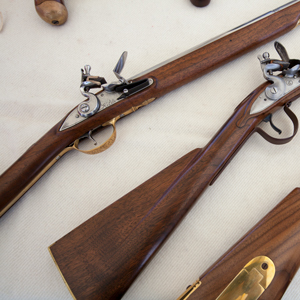
James Madison summarizes Spain’s request that he do something about the militants from Kentucky who are organizing to open the port of New Orleans by force. The Louisiana Purchase would ultimately result.
February 8, 1803
Unauthorized forces

President Jefferson recommends that any unauthorized groups intent on opening the port of New Orleans by force be arrested. The peaceful solution would be the Louisiana Purchase.
February 11, 1803
Two new ambassadors

In Washington City, President Jefferson writes a letter of credence granting the powers of a full ambassador to James Monroe and Robert Livingston. The two would negotiate Louisiana’s purchase.
February 14, 1803
The "Mississippi Question"

In Washington City, Senator James Ross raises his Mississippi Question regarding the closure of New Orleans. Ultimately, an answer will be needed before the Western Expedition can begin.
February 16, 1803
The "Mississippi Question"

In Washington City, Senator James Ross of Pennsylvania resumes his “Mississippi Question” speech recommending military action to end the Spanish closure of New Orleans to American navigators.
February 18, 1803
Livingston's strategy

In Paris, France, U.S. Minister Robert Livingston explains to Secretary of State James Madison his strategy to convince France to cede territory in West Florida and Louisiana.
February 19, 1803
Stoddard's orders

Captain Amos Stoddard is ordered to proceed to Kaskaskia as part of a military buildup along the Mississippi. President Jefferson has little hope of giving Thomas Rodney a federal appointment.
February 25, 1803
The "two million" bill

As James Monroe prepares to negotiate with France for Louisiana, President Jefferson writes a letter telling him about the “two million bill” and what would become known as the Lewis and Clark Expedition.
March 2, 1803
Madison's instructions
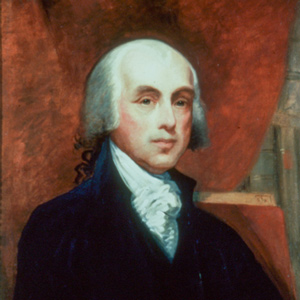
In Washington City, Secretary of State James Madison writes his instructions for negotiating the purchase of Louisiana, and President Jefferson asks Robert Patterson to train Meriwether Lewis.
March 3, 1803
Jefferson's Mississippi strategy

In Washington City, President Jefferson writes to William Dunbar— a naturalist, surveyor, and scientist living in the Mississippi Territory. He explains his plan for obtaining New Orleans and the Floridas.
March 7, 1803
Weather delays

In New York Harbor aboard the Richmond, James Monroe and his family wait for a change in the weather. During the delay, he writes to President Jefferson and reflects on his mission to Paris.
March 16, 1803
Jefferson's letter

Lewis is traveling to Harpers Ferry to obtain arms, ammunition, and the iron-framed boat. In Richmond, Virginia, a newspaper reprints President Jefferson’s letter regarding the closure of New Orleans.
March 17, 1803
Spain's refusal

President Jefferson and James Madison exchange letters regarding Spain’s refusal to open the port of New Orleans to American commercial traffic—a problem affecting the future of the Western Expedition.
March 19, 1803
Lewis at Harpers Ferry

At Harpers Ferry, Lewis secures weapons, ammunition, and oversees construction of the iron-framed boat. At Monticello, President Jefferson discusses Louisiana negotiations.
March 22, 1803
Federalist folly

From Monticello, President Jefferson writes to Secretary of State James Madison about a Federalist editorial that recommends Kentucky succeed from the Union. Such an action ran counter to Jefferson’s plans.
April 8, 1803
A British alliance?

At a meeting of Jefferson‘s cabinet in Washington City, it is decided that an alliance with Great Britain regarding Louisiana should be pursued should negotiations to obtain that colony from France fail.
April 10, 1803
Napoleon renounces Louisiana

Napoleon decides to sell the entire Louisiana colony to the United States forever altering the history of the younger nation and a decision necessary for the success of Jefferson’s Western Expedition.
April 11, 1803
Talleyrand spills the beans

In Paris, Charles-Maurice de Talleyrand, tells U.S. Envoy Robert Livingston that Napoleon wants to sell the whole Louisiana colony. Napoloeon’s brothers try to change his mind.
April 14, 1803
Priced too high

In a letter to Thomas Jefferson written on this day, the American minister to France, Robert Livingston reports that the asking price of 125 million francs for the Louisiana Territory is too high.
April 17, 1803
Livingston's commission

In Paris, Robert Livingston asks for a better commission to negotiate the purchase of Louisiana. In Washington City, the U.S. Attorney General writes questions for Lewis to ask of the Native Nations.
April 18, 1803
Ellicott's instruments

In Lancaster, Andrew Ellicott writes about navigational instruments he believes are for Meriwether Lewis. In Washington City, James Madison writes an alternate plan for the Louisiana negotiators.
April 19, 1803
New Orleans re-opens

James Madison receives news that the Spanish King has opened the port of New Orleans to United States merchants. Meanwhile, Meriwether Lewis completes his work at the Harpers Ferry armory.
April 27, 1803
Philadelphia mentors

Jefferson tells Lewis of the mentors waiting for him in Philadelphia and informs the public that the expedition is headed to the Mississippi. In Paris, the price for Louisiana’s purchase is negotiated.
April 29, 1803
The price for Louisiana

In Paris, France, the Louisiana Purchase negotiators settle on a price—80 million francs plus payment of French debts worth about 20 million francs.
May 1, 1803
Monroe's presentation

James Monroe is presented to Napoleon and wordsmithing of the Louisiana Convention continues. Secretary of State James Madison writes a letter telling of imminent war between Britain and France.
May 2, 1803
Louisiana Treaty signed

The French-language version of the Louisiana Purchase Treaty and Convention is signed in Paris, France, and Robert Livingston writes to President Thomas Jefferson to tell him the news.
May 4, 1803
Pinckney's dead end

Minister to Spain, Charles Pinckney, writes from Madrid with news that the King will not concede any part of Florida, and that he defers the question of keeping the port of New Orleans open to France.
May 12, 1803
Dinner with Armistead Mason
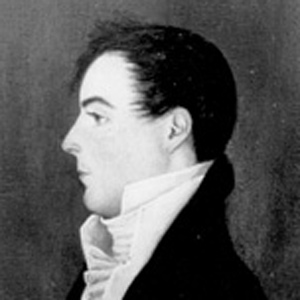
Meriwether Lewis dines with Armistead Mason and other young Philadelphian gentlemen and ladies. In Paris, Robert Livingston reflects of the significance of the recently signed Louisiana Treaty.
May 13, 1803
Louisiana Treaty completed
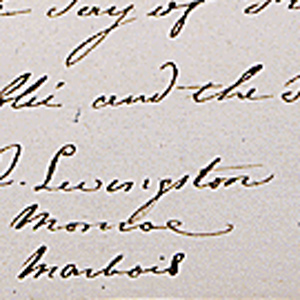
In Paris, France, Robert Livingston and James Monroe record the details of the Louisiana Purchase for James Madison. Also in Paris, B. G. É. L. Lacepède provides information about the Columbia River.
May 18, 1803
Tackle and Indian gifts

In Philadelphia, Israel Whelan buys Indian gifts and fishing tackle. Spain announces the retrocession of Louisiana and Washington City learns that the port of New Orleans has reopened to American trade.
June 2, 1803
Ratify quickly!

In a letter written in Paris, U.S. Minister to France, Robert Livingston advises President Jefferson to ratify the Louisiana Treaty and its Conventions quickly. Lewis continues preparing in Philadelphia.
June 9, 1803
Jefferson's surprise

In Washington City, Jefferson receives the news that France wishes to sell their entire Louisiana colony. In Philadelphia, Meriwether Lewis has a painted chest made to hold his scientific instruments.
June 22, 1803
Louisiana news and rumors

A Frankfort newspaper reports that Louisiana will be ceded to the United States and in Washington City, the National Intelligencer reports that the port of New Orleans has re-opened.
July 3, 1803
News from France
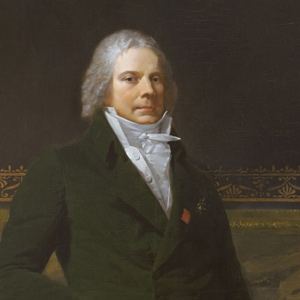
A letter announcing that the Louisiana Purchase Treaty has been officially signed reaches Washington City. President Jefferson writes to Henri Peyroux, the former commandant of St. Genevieve.
July 4, 1803
Jefferson's letter of credit

The news of the Louisiana Purchase is made public and President Jefferson issues Meriwether Lewis an open letter of credit to pay for supplies or passage should he meet any ships at the Pacific Ocean.
July 15, 1803
Pittsburgh arrival

Lewis arrives at Pittsburgh and immediately writes the President. In Washington City, Thomas Jefferson writes to Lewis with news of the Louisiana Purchase and information about the Columbia River.
July 17, 1803
Louisiana questions

While Lewis prepares for departure in Pittsburgh, President Jefferson sends out a list of questions about Louisiana for the upcoming Congressional debate on the Louisiana Treaty and Conventions.
July 19, 1803
Stoddard's new orders

Amos Stoddard given orders to establish an Army fort in preparation for the transfer of Louisiana and Jefferson’s Western expeditions. Meriwether Lewis is in Pittsburgh having the barge built.
July 27, 1803
Orders for Kaskaskia

Lewis is in Pittsburgh having a military barge built prior to departure down the Ohio River. From Washington City, orders are issued to lease land in Kaskaskia to build an American Army post.
August 10, 1803
Reflections on Louisiana

Meriwether Lewis is in Pittsburgh having a military barge built. In Williamsburg, Virginia, St. George Tucker writes his Reflections . . . supporting the Louisiana Treaty and Conventions.
August 12, 1803
New Orleans attitudes

Meriwether Lewis is in Pittsburgh having a military barge built prior to departing down the Ohio River. Elsewhere, a diplomat, U.S. Senator, and President Jefferson discuss the cession of Louisiana.
August 18, 1803
Louisiana cession news

Lewis is in Pittsburgh having a military barge built prior to departing down the Ohio River. President Jefferson in Monticello and Daniel Clark in New Orleans write news of the Louisiana cession.
August 31, 1803
Leaving Pittsburgh

After eight months of preparation, Lewis finally leaves Pittsburgh with a crew of eleven hands. During a stop, he shows off his new air gun, and Blaze Cenas accidentally shoots a female spectator.
September 20, 1803
Guyandotte Rivers

On or near this day, Lewis passes present Guyan Creek and speeds through a narrow section of the Ohio River. He would encounter an “ugly” riffle at the mouth of the Guyandotte River.
September 29, 1803
Mastodon bones

At Cincinnati, Ohio, Lewis rests his crew and works with Dr. Goforth to examine the fossil bones excavated from nearby Big Bone Lick. William Claiborne writes an update on the Louisiana Territory.
October 3, 1803
Spoiled smallpox vaccine

Lewis writes a letter to Jefferson describing his time in Cincinnati. He says that his kinepox vaccine—used to prevent smallpox—has spoiled and also asks for a copy of the Louisiana Purchase treaty.
October 4, 1803
To Big Bone Lick

On or near this date, Lewis leaves Cincinnati for Big Bone Lick where he expects to collect fossils for Thomas Jefferson. Elsewhere, tensions rise between Spain and the United States over Louisiana.
October 5, 1803
Big Bone Lick

Lewis is likely at Big Bone Lick collecting fossils and fellow travelers Thomas Rodney and Nicholas Cresswell describe the diggings that he saw. Elsewhere, the U.S. Army expects problems with Spain.
October 20, 1803
Louisville shipyards

In Louisville, two new recruits officially enlist, and the shipyard at Bear Grass Creek is described by fellow traveler Thomas Rodney. In Washington City, the Senate ratifies the Louisiana Purchase treaty.
October 24, 1803
Indian mounds

While preparing for departure from the Falls of the Ohio, perhaps the local Indian mounds piqued Lewis’s interest. They are described by fellow traveler Thomas Rodney and later by ethnographers.
October 25, 1803
Louisiana Treaty ratified

Today is the last full day that Clark and Lewis are at the Falls of the Ohio. In Washington City, the House of Representative debates and then votes to ratify the Louisiana Purchase treaty and conventions.
November 5, 1803
Shawneetown, Illinois

On or near this date, the expedition passes Shawneetown. Ohio River traveler Fortescue Cuming would later describe the town. One week prior, Thomas Rodney found wrecked boats below the Wabash River.
November 14, 1803
End of the Ohio

The expedition sets up a camp at the mouth of the Ohio. In Washington City, a report on Louisiana is presented to Congress with information about a mountain of rock salt and Spanish land grants.
November 16, 1803
Seaman not for sale

At the mouth of the Ohio, Lewis and Clark scout the western shore of the Mississippi River where a Shawnee man tries to buy Lewis’s dog, Seaman. In Washington City, President Jefferson plans more expeditions.
November 18, 1803
Clark's Fort Jefferson

The captains and eight men cross the Ohio to visit Fort Jefferson, established by William’s older brother, George Rogers Clark. They return to find that several enlisted men have left camp and are drunk.
November 29, 1803
Spanish obstruction

On or after this date at Fort Kaskaskia, the captains learn that the Spanish Governor of Upper Louisiana intends to block the expedition. They select more soldiers and make decisions about their next steps.
November 30, 1803
Spain cedes Louisiana
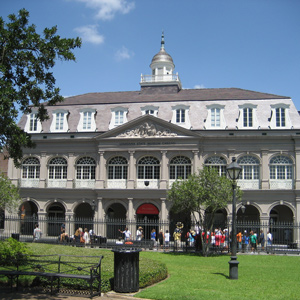
In New Orleans, Pierre-Clément de Laussat has a parade and signs papers that officially cede the Louisiana Province from Spain to France. In Illinois, Lewis and Clark work at Fort Kaskaskia..
December 3, 1803
Leaving Fort Kaskaskia

In the late afternoon, Clark leaves Fort Kaskaskia with the boats, and they go three miles up the Mississippi. Lewis checks the accuracy of his chronometer by taking equal altitudes of the sun.
December 7, 1803
Cahokia arrivals

Lewis travels by land and Clark by river to arrive at Cahokia, Illinois. Lewis meets John Hay and Nicholas Jarrot who help him negotiate with the Spanish Lt. governor of Upper Louisiana.
December 20, 1803
Louisiana's formal transfer

In New Orleans, officials conduct the formal transfer of the city and lower Louisiana from France to the United States. At the Wood River construction site, the enlisted men move into their huts.
December 23, 1803
Mr. Morrison's corn

At Wood River, work continues building huts, Mr. Morrison’s corn arrives, and a Lenape Delaware man known to Clark visits. Near this date, Lewis observes the current system of slavery in Louisiana.
December 24, 1803
American emigrants

Working in Cahokia and St. Louis, Lewis finds that many American emigrants have arrived in anticipation of the Louisiana transfer. At Wood River, roofs are completed and passing boatmen visit with Clark.
December 27, 1803
Blankets and other goods

At Wood River, Clark has blankets set out to air and dry before placing them in a storeroom. The French prefect at New Orleans has his opinion of the boundaries of Louisiana reported to James Madison.
January 16, 1804
Shooting for the red leggings

At Wood River, Pvt. Reubin Field wins some red leggings in a shooting contest. In Washington City, President Jefferson congratulates Congress on the successful transfer of Louisiana to the United States.
January 17, 1804
River thick with ice

At Wood River, the thermometer drops below zero and the Missouri runs with ice. In Washington City, the Spanish Minister proposes that the Americans leave the west side of the Mississippi to the Indians.
February 14, 1804
Lewis misses the ball

Clark attends a ball, likely in St. Louis, but Lewis remains at winter camp on the River Dubois to complete work. Elsewhere, Madison and Monroe debate the location of Louisiana’s northern boundary.
February 19, 1804
Transfer orders

On or near this date in St. Louis, the Spanish Lieutenant Governor Dehault Delassus receives orders to transfer the Upper Louisiana Territory to Captain Amos Stoddard.
February 29, 1804
Skeptical federalists

The captains are in St. Louis and the enlisted men are at Wood River, Illinois under the charge of Sgt. Ordway. By now, Lewis likely has received President Jefferson’s letter mentioning the popularity of the expedition and the skepticism of the Federalists.
March 8, 1804
Transfer preparations

In St. Louis, Delassus Carlos announces the transfer of Upper Louisiana tomorrow. Lewis and Captain Amos Stoddard’s honor guard assemble in Cahokia in advance of tomorrow’s parade.
March 9, 1804
Raising the French flag

In St. Louis, Lewis serves as a witness to the delivery and receipt of the Upper Louisiana from Spain to France. With speeches and ceremony, the Spanish flag is lowered, and the French flag raised.
March 10, 1804
Raising the American flag

In St. Louis, Amos Stoddard declares Upper Louisiana as belonging to the United States, and the American flag is raised. Captains Lewis and Clark are there to witness the event.
March 12, 1804
St. Louis speech

In St. Louis, Dehault Delassus delivers a speech to several Indians informing them of the transfer of Upper Louisiana from Spain to the United States. Meriwether Lewis witnesses the event.
March 26, 1804
Finding Simon Girty

Lewis sends Thomas Jefferson Osage orange cuttings from Pierre Chouteau’s garden and in one of the Indian camps near the mouth of the Missouri, Clark meets Simon Girty, an infamous American traitor.
March 30, 1804
Casa Calvo's obstructions

At winter camp on the Wood River, the orders of yesterday’s military court are read. In New Orleans, Spanish Commissioner Casa Calvo asks that the Lewis and Clark Expedition be stopped by military arrest.
May 12, 1804
Expenses mount

Charles Gratiot forwards about $1500 in bills of expedition purchases. At winter camp, Clark arranges the boats’ loads. In Massachusetts, Samuel Brazer commemorates the Louisiana cession.
May 28, 1804
Drying wet cargo

At the Gasconade River, the expedition hunts and dries wet cargo. Having met with Captains Lewis and Clark on 25 May, trader Régis Loisel is now in St. Louis warning Spain of American encroachments.
Experience the Lewis and Clark Trail
The Lewis and Clark Trail Experience—our sister site at lewisandclark.travel—connects the world to people and places on the Lewis and Clark Trail.
Discover More
- The Lewis and Clark Expedition: Day by Day by Gary E. Moulton (University of Nebraska Press, 2018). The story in prose, 14 May 1804–23 September 1806.
- The Lewis and Clark Journals: An American Epic of Discovery (abridged) by Gary E. Moulton (University of Nebraska Press, 2003). Selected journal excerpts, 14 May 1804–23 September 1806.
- The Lewis and Clark Journals. by Gary E. Moulton (University of Nebraska Press, 1983–2001). The complete story in 13 volumes.

